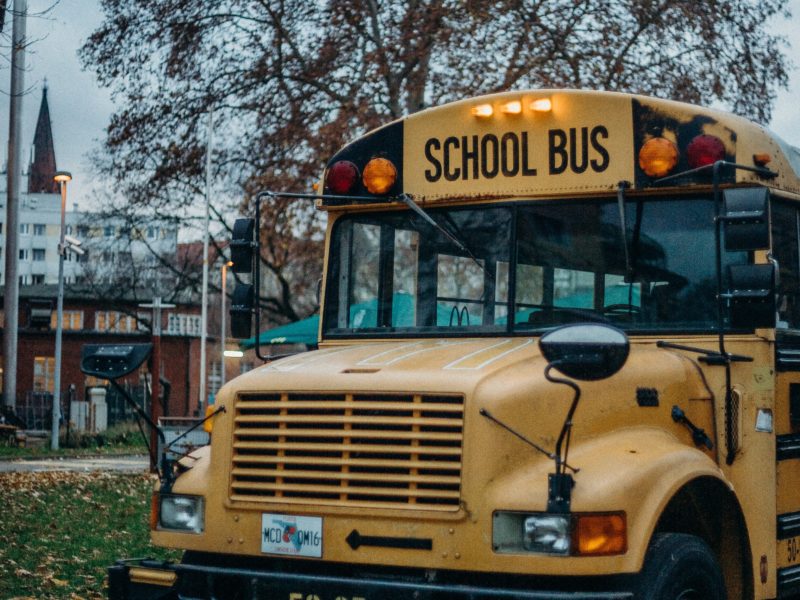Violence at schools is a nationwide problem. Adding to this reality are the growing concerns of remote learning contributing to cyberbullying and the ever-present threat of COVID-19 in schools, making it clear that schools need to take action to ensure the safety of our children, teachers, and faculty.
However, most U.S. schools are underfunded and contain vulnerabilities to active shooter threats. Despite legislation mandating adequate security measures and training staff on emergency lockdown procedures, there are still many potential dangers in schools.
Thankfully, there are ways that parents, administrators, and other community members can directly address this issue to ensure that schools have the proper equipment and training to address these issues: school safety grants.
In this article, we will take a look at what school safety grants are, types of school safety grants, how to apply for them, and how Nightlock’s line of school security products are protecting what matters most.
What is a School Safety Grant?
A school safety grant is just like it’s name implies: a source of funding directed at making schools a safer and more peaceful environment for educating our children.
Many states have allocated funds to improve school safety measures, enabling those in need to receive the necessary training and equipment without having to worry about the burden of extra expenses.
Intended for the very real threat of an active shooter scenario in schools, other dangers are also addressed with school safety grants. With COVID-19 being highly transmissible through schools, costly measures to protect your child’s health and those affected in the surrounding community.
Types of School Safety Grants
Many types of school safety grants exist. Some are comprehensive to all aspects of school safety while others are focused on threats such as lockdown systems for active shooter scenarios. Whatever the focus, the purpose of school safety grants is to protect students from threats that affect both the inside and outside the school.
Typically, most school safety grants cover one or more of the following categories.
- Threat prevention training
- Supplemental training for lockdown response for staff and faculty members
- Equipment for disease prevention, including
- Rubber gloves
- Hand sanitizer and soap
- Cleaning supplies
- Sneezeguards and barriers
- Reinforced door barricades, lock mechanisms, alarms, and other types of safety equipment
- Trained security personnel
- Technology for notifying law enforcement of threats to student health and welfare
- Mental health awareness training
- Bullying and violence-prevention training
- Laptops for remote learning
How to Pursue School Safety Grants
Pursuing any type of grant requires action to receive funding. School safety grants are no different and must meet certain qualifications.
Does My School Qualify for a School Safety Grant?
Finding out whether or not your school qualifies for a school safety grant first requires some research.
- First, consult your state laws and funding via search engine. A simple search of “school safety grants + [your state]” is the best place to begin.
- Another great resource is offered by The Crisis Prevention Institute, offering an in-depth guide to available grants, guidelines to apply, and more.
- Your state’s Safety Grant Program is another resource for finding funding for school safety via government sites such as the State Police Website.
- Another avenue is to apply with the federal government. The STOP School Violence Act of 2018 enables schools to apply for one of two areas of funding: School Threat Assessment & Technology Development. Visit com to learn more details and apply today.
Because types of grants, policies, and the amount paid varies by state, it’s important to find all available grants and apply accordingly.
Alternative Sources of Funding
Beyond state and federal funding, schools in need are encouraged to explore other avenues, as well.
The School Safety Grant is a non-profit that provides funding through grants for emerging technologies that significantly accelerates law enforcement response times to active shooter calls at schools nationwide. The organization’s website serves as a hub for schools seeking more funding for their schools, containing an application form and a multitude of resources to protect schools nationwide.
It’s also worthy to note that the School Safety Grant is staffed by selection committee chair Andrew Pollack, a parent that lost a child during the Stoneman Douglas High School in Parkland, Florida.
Private companies in the local community, such as Target and State Farm, often have funds set aside for local safety programs in public schools. Applicants should research all businesses in their local area to investigate grant opportunities that may be available but not widely advertised.
Fundraising drives, while not grants per se, can still be effective methods to generate the necessary funds from the community. Organisers should consult school administrators to verify and ensure that these programs are valid.
Tips for Finding School Safety Grants
- Be sure to check the specifications of each grant that is applied for. Some types of grants only cover safety equipment, while others fund training programs or safety training.
- Always apply for more than one grant. Virtually no schools are rejected from pursuing grants from simultaneous sources.
- Schools that receive grants typically need to keep records of how the money was spent, so this may be an additional expenditure that must be factored into school budgets..
How Can Nightlock Help Keep My School Safe?
As a last word on school safety, Nightlock is committed to ensuring the safety of every individual in schools across the country. Nightlock’s line of school security products features a wide variety of products to optimize safety, including:
Best of all, Nightlock is fire-rated and compliant with nearly all building codes mandated in accordance state legislation for approved safety devices.
If you would like to learn more about how Nightlock’s products are safeguarding schools across the nation, explore the website today. Our number-one priority is your safety and peace of mind.


 Drawbacks of Security Cameras for Your Home
Drawbacks of Security Cameras for Your Home